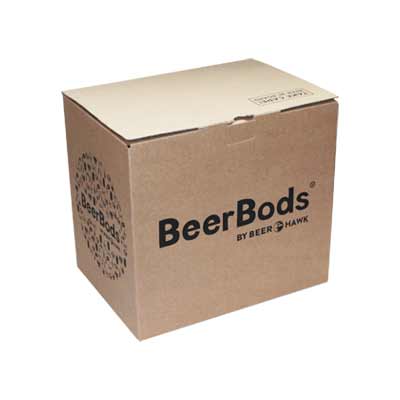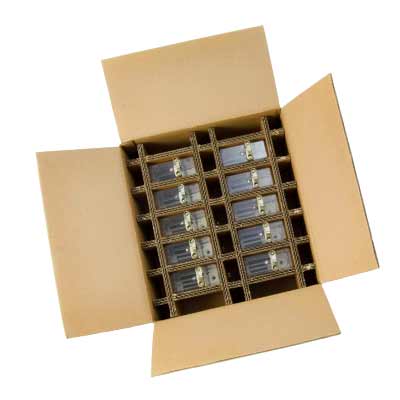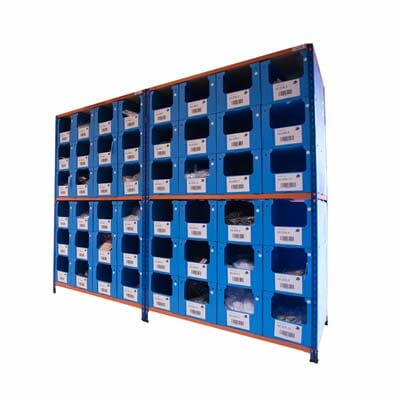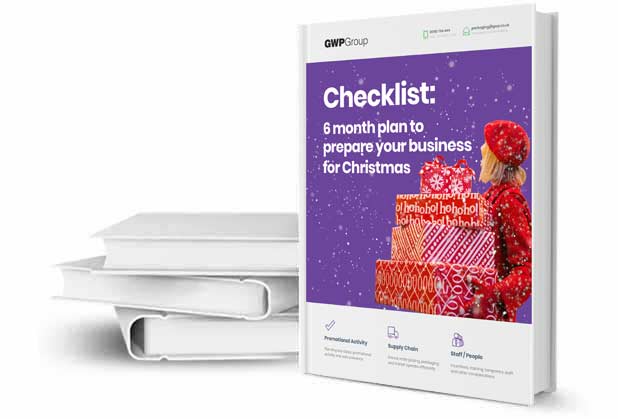Over 25 actionable festive packaging tips
Tactics, ideas, and other considerations for your festive packaging
If your business is banking on a successful Christmas trading period, these 25-plus festive packaging tips can help you gain a competitive advantage.
So, let’s cut to the chase. At the time of writing, Christmas is less than 100 days away, and with the nights drawing in and attention turning to the upcoming Black Friday event, your Christmas preparation at your business should be well underway.
But what role can your packaging play in this?
Festive packaging tips include ensuring you have enough stock for increased demand, creating impactful promotional packs, and considering your customers’ unboxing experience. You should also focus on how your staff, packing, logistics, and returns processes work. You should not overlook the sustainability of your festive packaging, either.
This guide provides over 25 festive packaging tips to help your business prepare for the Christmas period, including planning, staff requirements, logistics, and how packaging ties into all aspects of your business.
Contents
Introduction
Consumer activity in the run-up to Christmas
Although many businesses, particularly larger retailers and eCommerce sellers, focus on Black Friday and Cyber Monday, this can be a mistake. Although these are typically the busiest two days of the year (except for Amazon Prime Day, which is fast catching up), the extended run-up to Christmas is consistently the busiest period for overall sales (as reflected in these Christmas packaging facts).
Yet, whilst some Christmas shopping for gifts takes place on Black Friday, a large percentage of items purchased are for the individual buying them (particularly big-ticket items like TVs, fridges, sofas, as well as fashion and clothing).
Christmas, in contrast, sees consumers buying gifts for family and friends, leading them to purchase multiple items rather than one-off (often impulse) purchases.
Data from The Telegraph suggests that the average British family spends just short of £600 on Christmas presents.
The bottom line? Your business must be ready to capitalise on the significant increase in sales volume during this period.

Preparing for Christmas as a retailer in 2025
Preparing for Christmas as a retailer in 2025 is particularly challenging, yet remains crucial. It is vital to review last year’s performance, assess and plan inventory, ensure a cohesive marketing strategy, consider your staffing levels, trading hours, returns and much more. Ultimately, preparing for Christmas as a retailer provides the best chance of a successful holiday trading period.
According to reports, Black Friday sales in 2024 grew by 3.1% year over year, making it a significant online retail event.
It all adds up to another potentially challenging and competitive festive season for businesses that rely on seasonal trade.
Christmas packaging
Advice for businesses during Christmas
Arguably, the most crucial advice for a business during the Christmas period is to be prepared. Once your inventory, processes, staff and fulfilment are in place, it is also vital to consider your sales, marketing, and promotional strategy. Winning customers and sales is ultimately the difference between a successful Christmas period and a lacklustre one.
But how can your Christmas packaging (and packaging in general) help with this, and how does it fit into your overall plans?
Frequently neglected, or sometimes ignored altogether, your packaging can play a massive part in your success during the festive period, and this isn’t just your printed, retail packaging; it applies to your transit, postal, and eCommerce fulfilment boxes, too.
The remainder of this guide provides a checklist of 25 points you must consider to ensure your packaging meets increased demand and drives sales and customer satisfaction.
The guide splits these into several categories and topics, including the following:
Planning
You must consider the following when planning for Christmas:
- Awareness of timings and planning.
- Competitor analysis.
- Stock levels and management.
- Cost considerations.
Promotional
Points to cover when looking at your Christmas promotional activity include:
- Notable delivery and promotional dates.
- Brand awareness.
- Promotional packs.
Packaging supplies and products
To ensure your packaging provides a competitive advantage during the festive period, you must consider:
- Transit damage.
- Ensuring packaging fits the product.
- Avoidance of overpacking.
- Ensuring that the packs are easy to open.
- Recyclability of the packs.
- How easy are the packs to return?
- Christmas packaging supplies.
Staff
Staff play a vital role in your success, making it essential that you consider:
- Staff training, including temps.
- Staff efficiency in packing.
- Packing station set up.
- Order picking and fulfilment.
- Holidays and staff absences.
- Rewards for high performance.
Logistics
Without your logistics operating smoothly, Christmas trading can be seriously impacted. As such, consider how you:
- Handle extra stock.
- Manage transport requirements.
- Handle your returns policy.
Planning
When and how to plan Christmas packaging
Many argue that the best time to start planning for Christmas packaging is December 27th. Whilst this is unlikely to be possible if you are reading this (at the time of writing at least), the next best option is today (or as soon as you reasonably can).
If you have been in business for over 12 months, you should have historical data on the products and promotions that saw increased sales during previous Christmases. This data is fundamental for future planning.
It allows you to see when packaging usage began to increase, which lines you used the most, what secondary packaging (such as tapes, void fill materials, etc.) was required, and, crucially, the typical increase you are likely to see.
Whilst the years 2020, 2021, 2022, and 2023 were somewhat of an anomaly due to the Coronavirus pandemic and the cost-of-living crisis, using previously gathered data can help you make informed decisions about the packaging you are likely to require.

Competitor analysis
Whilst the data you collected in previous years is invaluable, it is also essential to consider what your competitors are doing.
Do they launch their sales events early? Have they had success with customised packaging, two-for-one offers, free shipping, or similar promotions? This activity affects not only their packaging requirements, but potentially your own (if, for example, you are losing sales due to being undercut on price or outperformed in marketing and awareness).
Remember what successes you had with your own promotions and how quickly you saw their impact. Remember to allow some leeway should opportunities arise due to your competitors’ actions (or if you need to respond to their sales tactics).
Stock levels and management
Of course, these points will help you determine how much extra packaging you should need for the festive period, but where does all of this extra packaging go? Especially as you are holding more stock.
It is vital to consider how to optimise space in your warehouse to accommodate the extra packaging you hold (these bite-sized tips can help with warehouse efficiency), but there are other options, too.
For example, suppose your packaging supplier offers a Just-in-Time (JIT) supply service. In that case, it is essential to speak with them about the volume changes you expect during the Christmas period. A service such as this also helps you to minimise space requirements in your warehouse.
And finally, even with a JIT agreement in place, lead times for cardboard boxes may still be longer than in previous years (mainly due to material shortages). Plan to avoid being left without any (or unsuitable) packaging for your requirements.

Costs
The final part of your planning should also look at your costs and cash flow.
Whilst using more packaging obviously means you are selling more products, your costs can increase in the months leading up to Christmas as you start to build up your packaging and product inventory.
Ensure that you prepare your business for this and that your finances can handle the upfront costs of a successful trading period.
Promotional
Important delivery and promotional dates
It is essential that your packaging is in place before your sales start ramping up, but when is this?
There are well-known landmarks in the run-up to Christmas (Black Friday and Cyber Monday being two already mentioned), but when exactly do your sales take off? Do you see a steady increase or a sudden surge? When do your various marketing campaigns or advertisements go live? What impact do these have?
As detailed previously, looking at your historical data can help here, but all elements of your business must be joined up. It is no use going live with a promotion (especially if it turns out to drive significant sales volumes) if you don’t have the capacity or packaging to fulfil the increase in orders.

Awareness
Whilst this is essentially the focus of your marketing campaigns, it is wise to consider how your packaging can help increase awareness of your brand and products during the Christmas sales period.
Particularly important in retail environments (where your packaging must grab consumer attention), you can even use your eCommerce packs to start tempting customers with upcoming seasonal offers.
This consideration also underscores the need for all areas of your business to be fully aware of critical dates and expected demand peaks.
Promotional packs
The design and style of any promotional or festive packaging you use for Christmas typically garner the most attention, but this shouldn’t be at the expense of the points listed here (particularly in the next section).
Saying that, seasonal or Christmas packs are vital to drive impulse purchases in-store, grab attention, add value, and delight your retail and eCommerce consumers.
You should ensure you do not under- or over-purchase promotional packs, as doing so can limit the effectiveness of campaigns or result in significant packaging waste after the promotional period.
As such, it is often wise to consider generic packs that can be reused the following Christmas or to customise packs with sleeves, stickers, or other less costly items.
Packaging performance
Preventing transit damage
Whilst this may sound obvious, you must ensure that your packaging (including special festive packs) is up to the rigours of the transport and courier networks you use.
Your packs must be able to withstand being dropped, crushed, getting left out in bad weather, and general mishandling, particularly with the increase in deliveries over the Christmas period and ongoing driver shortages.
Make sure you use appropriately sized boxes, protective inserts or void fill and that your packaging is of suitable quality in the first place (cheap packaging is typically a false economy when factoring in returns and refunds).

Ensure packaging fits your products
One of the key ways your products will suffer damage in transit is by rattling around in oversized outer packs or by multiple items colliding.
One fix for this is to include the proper void fill, but this can quickly become expensive if your boxes are too large for the products you are shipping.
Equally, for retail applications, whilst large packs can often be eye-catching in-store, the disappointment that follows when consumers reveal the smaller-than-expected contents can harm consumer loyalty and affect repeat purchases.
Avoid overpacking
Following the previous point, many people have received small products in ridiculously oversized packaging when ordering online, yet consumers still consider this one of the biggest annoyances.
With a massive influx of boxes and packaging during Christmas, consumers want to avoid the additional hassle of disposing of excess void fill and large amounts of cardboard. This problem is particularly acute for items that can only go in the bin (such as air sacks, bubble wrap, etc.).
In addition to the annoyance of it all, it also looks (and is) bad for the environment, increases transport costs, and can lead to rearranging deliveries if you are out when the product itself would have fitted through the letterbox were it not for the packaging.
Packs are easy to open
Another gripe for consumers is receiving packaging that is nigh on impossible to open.
Whilst it is essential that your packaging protects your products on their way to the retail outlet for consumers’ delivery address, frustration at not getting into the exciting new purchase can reflect poorly on your brand and products.
However, numerous options exist to resolve this, including tear strips and clever locking mechanisms to improve the unboxing experience.
Unboxing experience
Speaking of unboxing, the experience you provide your customers can add real magic to your brand and products.
Consider packaging inserts to display the products upon opening or recessed foam for a luxury appearance and feel. You could even develop the pack so consumers retain it for ongoing product storage.
When used alongside your company branding or a seasonal theme, this can delight your customers and drive loyalty moving forward.

Recyclability
Having already touched on how consumers dislike packaging that is too big for the products within, your packaging can exacerbate this further if it is not easy to recycle (or must be split into its parts before recycling).
Consumers of all ages and demographics now demand much more sustainable packaging and products. This expectation is particularly true at Christmas (which many consider extraordinarily wasteful and excessive).
If consumers perceive your brand as not environmentally friendly, it is highly likely to harm your sales in the long run. Yet showing your concern for sustainability, for example, by using FSC-certified packaging, can be a real plus for many customers.
Returns
It happens: even with the best will in the world, products can arrive damaged, not be exactly what the customer was looking for, or even be completely different from what they ordered (though hopefully only on rare occasions!).
Whilst many businesses now have robust returns policies, many overlook that shoppers usually send back unwanted products in their original packaging. Can this survive another trip through the transport network?
If not, you may end up with many damaged items that are no longer fit for sale, resulting in significant costs to your business (and undoing the gains you may have made over the festive period).
Christmas packaging supplies
Christmas packaging supplies include limited-edition promotional packs, eCommerce boxes, postal packs, and other retail packaging. Secondary packaging, including tapes, void fill, labels, document wallets, bags, and so on, must not be overlooked either. You may also need cardboard POS stands and other promotional display items.
You must pay attention to every area of your packaging. It is surprisingly common for businesses to have sourced plenty of boxes for the festive rush, only to run out of tape or void fill. Both of these can have disastrous effects on how well your packaging performs in transit, especially if you use a substitute you source at the last minute.
Ensure you purchase all of your packaging supplies in suitable volumes for your forecasted sales performance.

Staff
Staff training, including temps
How your staff use your packaging can significantly impact its success. It is essential to select the right sizes, use the correct void fill, pack the products correctly, and even know where to find supplies if they run out.
Put simply, comprehensive staff training helps your packaging operations run as smoothly as possible.
It is also essential that any temporary staff you employ receive at least some basic training, something many businesses often overlook.
Staff efficiency (packing)
You can also assess how efficiently they pack your products following staff training. Improving efficiency before the rush of orders can help make the entire process much more successful.
It is worth considering packaging that can aid your staff, too. For example, you can use crash lock boxes to eliminate taped closures (vastly speeding up packing times). If you must use tape, is gummed or self-adhesive tape quicker? Could you use self-locking boxes with tamper-evident labels?
You should consider all these points well before the Christmas rush highlights any inefficiencies in your packaging process.

Packing bays
Similarly to how your staff use your packaging, you should consider the environment in which you ask your employees to work.
Well-thought-out packing bays, with all required items at hand, can significantly shorten packing times. Having extra supplies stored nearby (rather than on the other side of your warehouse) can also help, as can a comfortable environment that does not cause excessive fatigue.
Order picking and fulfilment
Taking the efficiency of your packing a step further, the organisation of your stock, and how you store it in picking bins, can significantly impact how quickly you can process orders.
Whilst not strictly packaging, stacking pick bins, pick walls, Correx bins, and similar storage can help better organise stock and minimise the time spent retrieving items ready for shipment. Adding temporary picking bins can provide extra storage capacity during peak season.
Successful order picking is a topic all of its own, however. If you feel you could improve in this area, you may find this guide on tactics to improve your picking performance useful.
Holidays and staff absences
Understandably, people want to spend time with family and friends at Christmas, so your business may face staff shortages despite being the busiest time of the year.
However, it is critical that those responsible for packaging —ordering it, monitoring stock levels, selecting the right lines, quality checking, etc. —are not out for periods that could affect your operations’ success. Or, if they are, you sufficiently train their colleagues to pick up these tasks.
Reward your team
Finally, remember to reward your picking and packing staff.
Setting sensible, achievable targets can motivate employees and lead to surprising gains in productivity. Couple this with activities that can boost morale (such as free food or drinks, Christmas events, and competitions), and you can motivate employees to work harder and more accurately.
A happy workforce is a productive workforce.
Logistics
Handling extra stock
As mentioned at the start of this guide, an increase in orders around Christmas also requires more stock to handle and store, both products and packaging.
One way to mitigate this challenge is to use temporary picking bins.
These can be manufactured from materials such as Correx® or cardboard and positioned at aisle ends and other areas where you have spare floor space. You can then use these to store additional stock or to reorganise your inventory so that popular items are quicker to pick.

Managing transport requirements
Due to inflation and the resulting fuel prices, transport is likely to be costly this year. As such, it is essential to maximise its efficiency wherever possible.
Strategies include using packs that are size-optimised for transport (e.g., avoiding sending large packs that take up unnecessary space) or considering standard sizes, such as Royal Mail PIP boxes, to minimise costs.
It is also essential to manage customer expectations regarding delays and ensure that your picking and packing do not contribute to extended fulfilment times.
Returns policies
Finally, another factor to consider is how to handle the volume of packaging that customers may return to you.
Can this be reused for additional deliveries? Where should it be stored? Do damaged or tatty-looking boxes need to be recycled?
Basically, it is crucial to have an end-to-end strategy for your packaging supplies, all the way through your supply chain and back again.
Summary
Getting help with your festive packaging
There are many factors you should consider when preparing your business for Christmas, even when focusing solely on packaging.
Whilst it may be cutting it fine, if you are struggling to source your festive boxes, promotional packs, retail packaging, eCommerce supplies or even POS stands, please get in touch with our team of packaging experts for assistance if required.
Finally, everyone at GWP wishes you a merry (and busy) Christmas (trading period) and a happy New Year!
Share this article
Further reading


About the author
David joined GWP Packaging in 1995. His extensive knowledge and experience of corrugated packaging means he is widely regarded as an expert on this topic.
Products in this guide
Get in touch
Related guides
11 tips and ideas for successful branded packaging
18 bitesize tips for packing postal orders and eCommerce fulfilment
21 tips to prepare your warehouse for peak season
11 ideas for successful packaging during peak season demand
Seasonal packaging: the 7 do’s and don’ts for success
Temporary picking bins – 12 ways they help with seasonal demand
Festive packaging and business preparation for Christmas
7 facts on the importance of eCommerce packaging
Analysis: Stock vs. custom eCommerce packaging
eCommerce shipping – the crucial role played by packaging
eCommerce unboxing experience and best practice
Peak packaging Monday – what is it, and does it affect your business?



















































